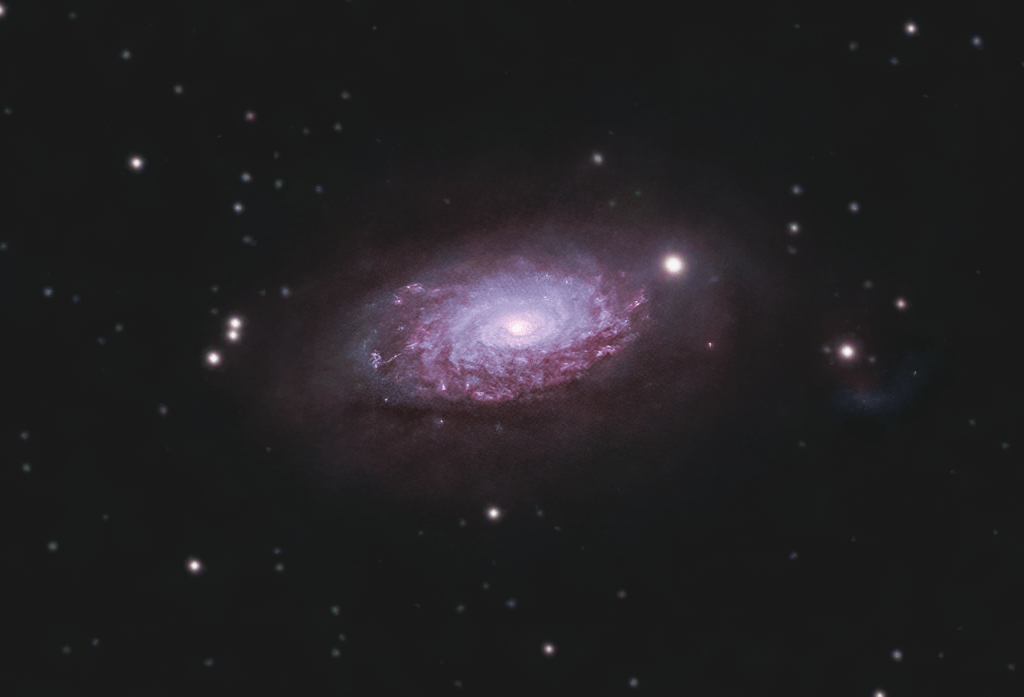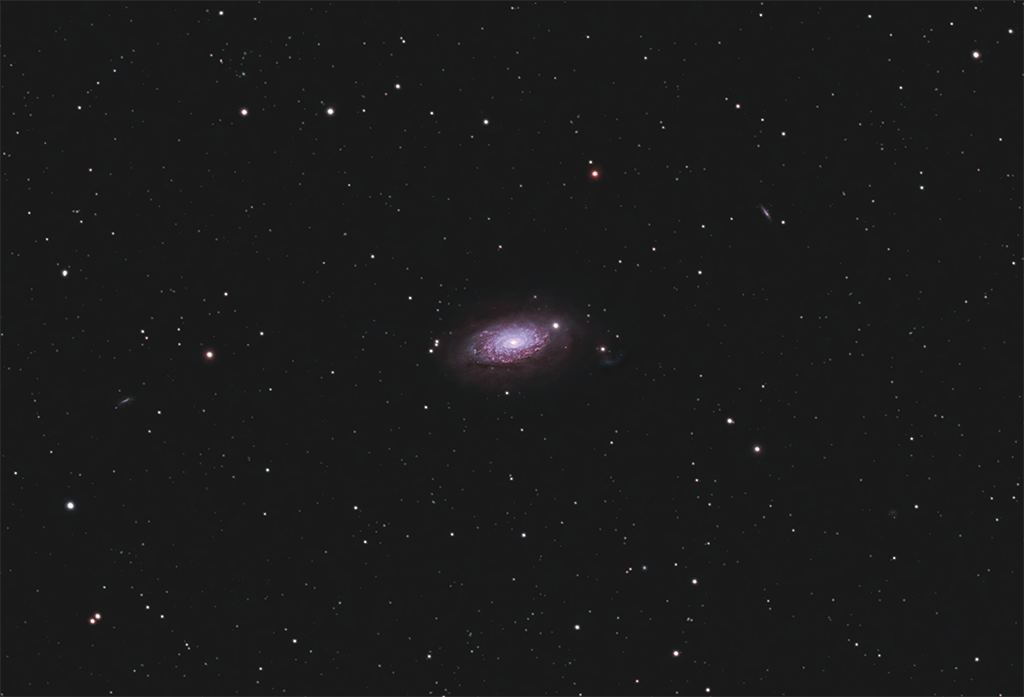The Sunflower Galaxy, catalogued as M63 or NGC 5055, is a bright spiral galaxy about 25 million light-years away in the constellation of Canes Venatici. It has blue spiral arms interspersed with dust lanes and pink star forming regions. This galaxy is of interest to astronomers studying star formation and the evolution of galaxies because of its many star forming regions. In fact, astronomers estimate it has four times as many stars as the Milky Way, despite being approximately the same size (100 000 light-years across).
IAU and Sky & Telescope magazine (Roger Sinnott & Rick Fienberg)
This was a mega imaging run. It was beautifully clear (and freezing cold) all night. I imaged from dusk until dawn, which almost never happens. I captured 92 light frames (7 h 40 min) in total and only rejected a handful at the start and end of the run due to high sky brightness.
Getting ‘starlinked’
I also got ‘starlinked‘ for the first time. Actually, I can’t be certain they were Starlink satellites, but this region of the sky did have particularly heavy traffic. Satellite trails affected almost a third of my subs. Fortunately, by using kappa-sigma averaging, the streaks were rejected quite effectively, leaving no trace in the final stack. The technique does not always work as well as it did this time.
In the image below, I selected a handful of subs containing satellite streaks and stacked them using a straightforward average. I then stretched it very roughly (revealing lots of background sky noise in the process) to show the satellite streaks more clearly.

Light pollution in general, including the sunlight reflected off the current 1200 Starlink satellites, really upsets me. It is bad enough that we waste so much energy scattering artificial light everywhere, including upwards into the sky, mostly for no good reason at all, without additional contributors in the sky itself!
Frames
- 87× 300-s light frames (Gain 900), 7 h 15 min total exposure time
- Full use of calibration frames (darks, flats and dark flats)
Equipment
- Explore Scientific ED 102 mm Apo f/7 refractor
- Sky-Watcher EQ6-R PRO SynScan GOTO equatorial mount
- Altair Hypercam 294C PRO colour fan-cooled camera
- Altair quad-band one-shot colour (OSC) 2″ filter
- Revelation Adjustable Field Flattener
- Altair 60mm guide scope
- Altair GPCAM2 AR0130 mono guide camera
Software
- Sharpcap
- PHD2
- DeepSkyStacker
- Photoshop
- StarNet
- Topaz Labs DeNoise AI
- Gradient XTerminator




